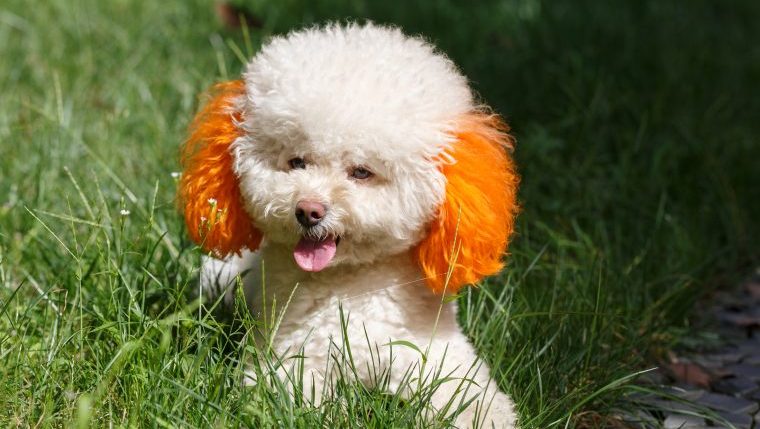
Dogs are adorable. From their soft fur and soulful eyes to their silly smiles and slobbery kisses, there’s no end to canine cuteness. A dog’s appearance is a huge part of what makes each pup unique; even dogs of the same breed vastly differ in their looks. But no matter their physical characteristics, every dog is endearing in their own way. And while we’re all for proper grooming to keep dogs healthy and clean, there’s one canine cosmetic practice we simply cannot endorse: dog dyeing. Unfortunately, dyeing dogs’ fur, whether for aesthetic reasons we don’t understand (you can’t improve on perfection, people), social media clout, or shock value is a disturbing trend. But dog dyeing is not only unethical; it’s harmful to dogs’ health and well-being. We’re going to walk you through several reasons why you should never dye your dog.
Dyeing is bad for dogs’ skin
It is important to remember that dogs have a different skin pH and a thinner epidermis than humans, making them more susceptible to toxins. The dyeing process involves applying a chemical solution to a dog’s coat, which can cause skin irritation and allergic reactions. Dyes are not regulated and may contain toxic chemicals, like lead acetate. These chemicals can cause dogs to itch, scratch, and develop rashes. Some dogs may also experience hot spots, which are areas of inflamed skin that can be very painful. Moreover, dogs’ skin may absorb the dye, allowing chemicals to enter their bloodstream, leading to more health problems.
Dyeing puts dogs’ health at risk
Damage from dyeing goes beyond dogs’ skin. Dogs who have been dyed may experience short-term health problems, including respiratory issues, nausea, vomiting, and diarrhea, as well as long-term issues like liver and kidney damage, or even cancer. Dogs have a sensitive respiratory system, and exposure to chemical dyes can cause respiratory problems, such as asthma and bronchitis. There is also the possibility of a dog accidentally ingesting the dye during the dyeing process. If dogs are allergic to chemicals in the dye, they may suffer severe allergic reactions and even death.
The trauma of dyeing
Dyeing can also cause trauma to dogs. Dyeing is an assault on dogs’ olfactory abilities, which pups rely on to function. Because dyeing alters dogs’ smell, they may feel confusion and anxiety at their suddenly unnatural scent. Their new artificial and off-putting odor also impairs communication with other dogs, who use scent to determine friend from foe. The scent of the dye can cause other canines to become physically aggressive or shun dyed dogs. This can lead to a sense of isolation and make dogs feel depressed.
Dyeing is also an uncomfortable process for dogs, as it involves being chained to a table for extended periods of grooming time. This can be a stressful and scary situation for fur babies.
Dyeing promotes the objectification of animals
Dogs are living, feeling creatures and not objects for human amusement. Being a dog owner is a big responsibility, and that includes caring for your pup’s health and treating them well. As PETA states, “All animals deserve to live free from the speciesist whims of humans.”
Don’t dye your dog
Dog dyeing is not only dangerous for dogs, but it’s also completely unnecessary. Looking for more humane ways to show off your dog? Consider dressing them in some cute clothes, buying them a blinged-out collar, or teaching them cool tricks. Whatever you do, don’t dye.
ChatGPT assisted in the creation of this article.









